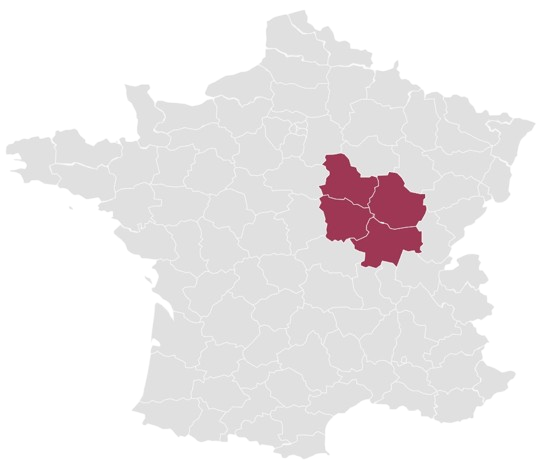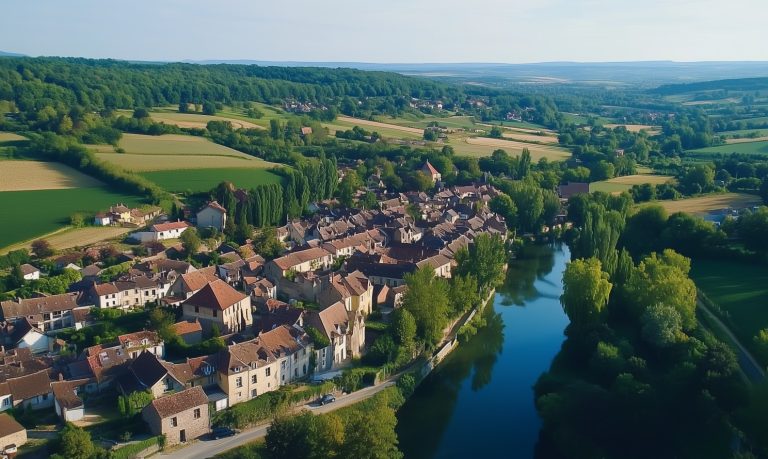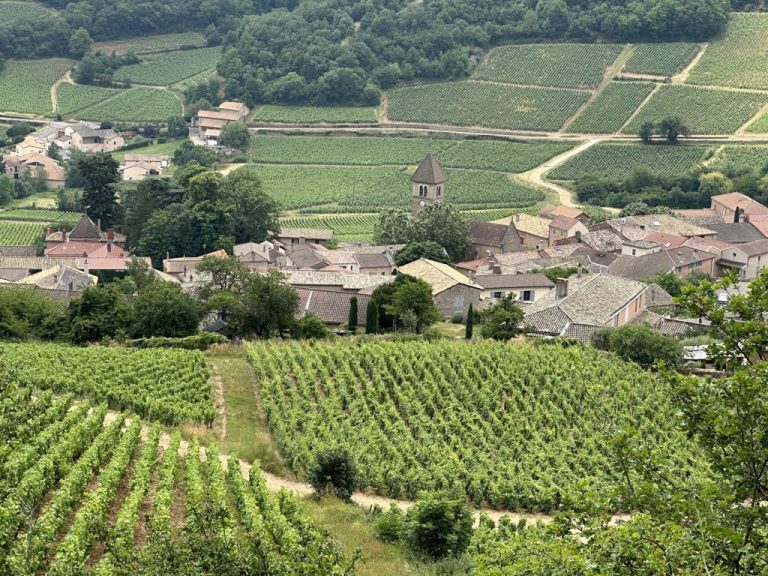
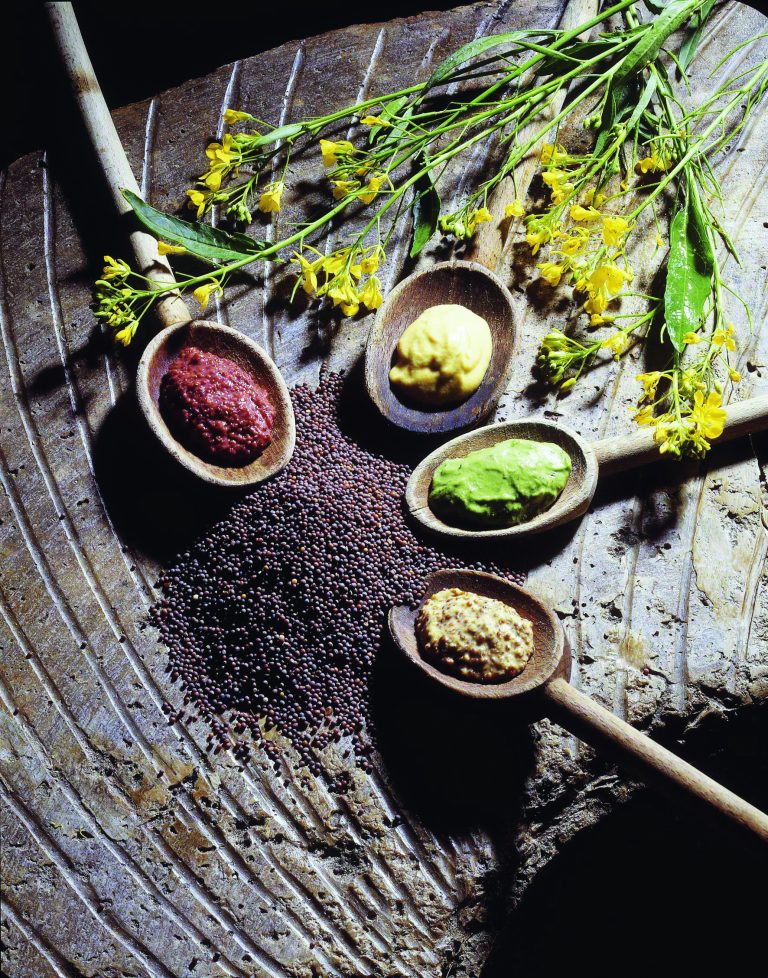

My apologies to Heinz, but I have never liked ketchup. Ever. Maybe it is due to my ample French genes, but my condiment of choice is mustard, especially Dijon mustard. With its sharp, tangy, slightly spicy flavor, it is the perfect accompaniment to so many things. Fallot mustards offer a wide variety to play with. I love to match the various flavors with different dishes: sweet honey mustard with chicken tenders or on a turkey sandwich, or the more elegant, slightly acidic Chablis Dijon mustard with a delicate white fish or asparagus.


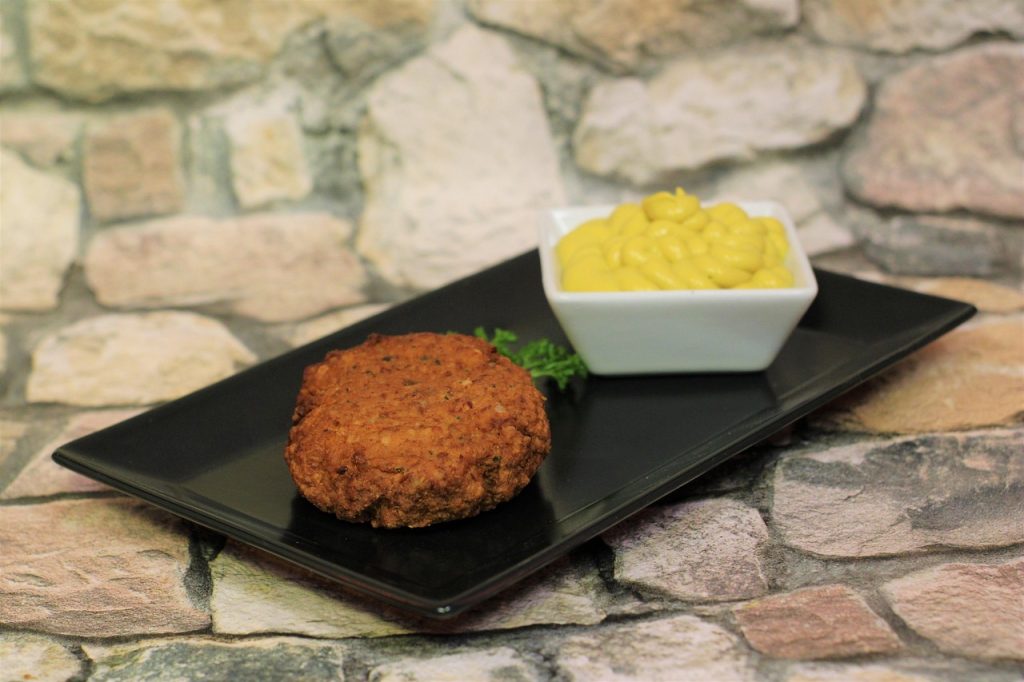
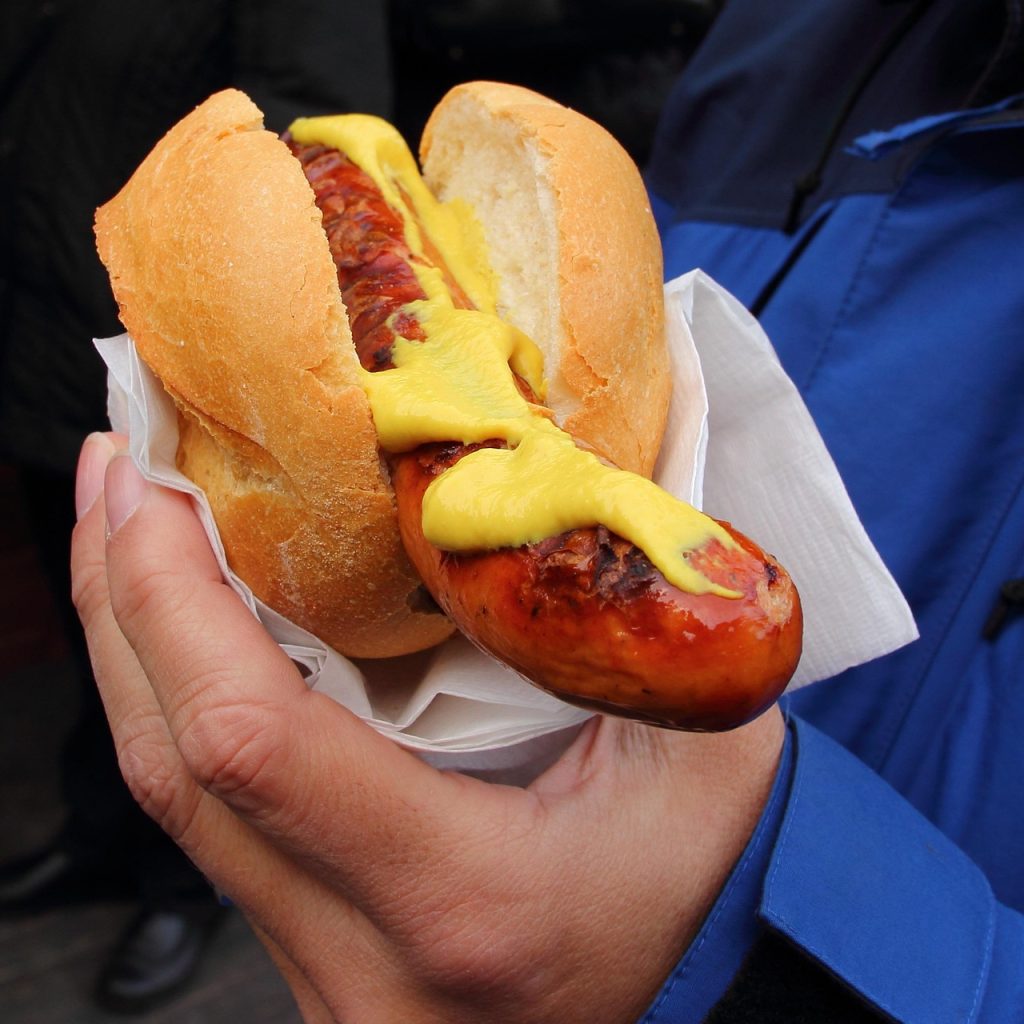
I never realized there were so many different types of mustard until I went to Burgundy, and then I realized I had a lot to learn, starting with, it’s not made in Dijon!
Dijon is a Recipe, Not a Protected Designation
As we learn about French specialties we begin to understand that Champagne has to be made in the region of Champagne … Roquefort cheese must be produced in Roquefort … and we begin to feel quite confident that we have it all figured out. But as I used to always tell my students, to each rule there is an exception! And this is it. “Dijon” is actually a recipe, a “style” of mustard. It can be made anywhere in the world, as long as it follows the recipe, which basically calls for using brown or black mustard seeds and white wine or wine vinegar instead of the traditional vinegar used in other mustards.
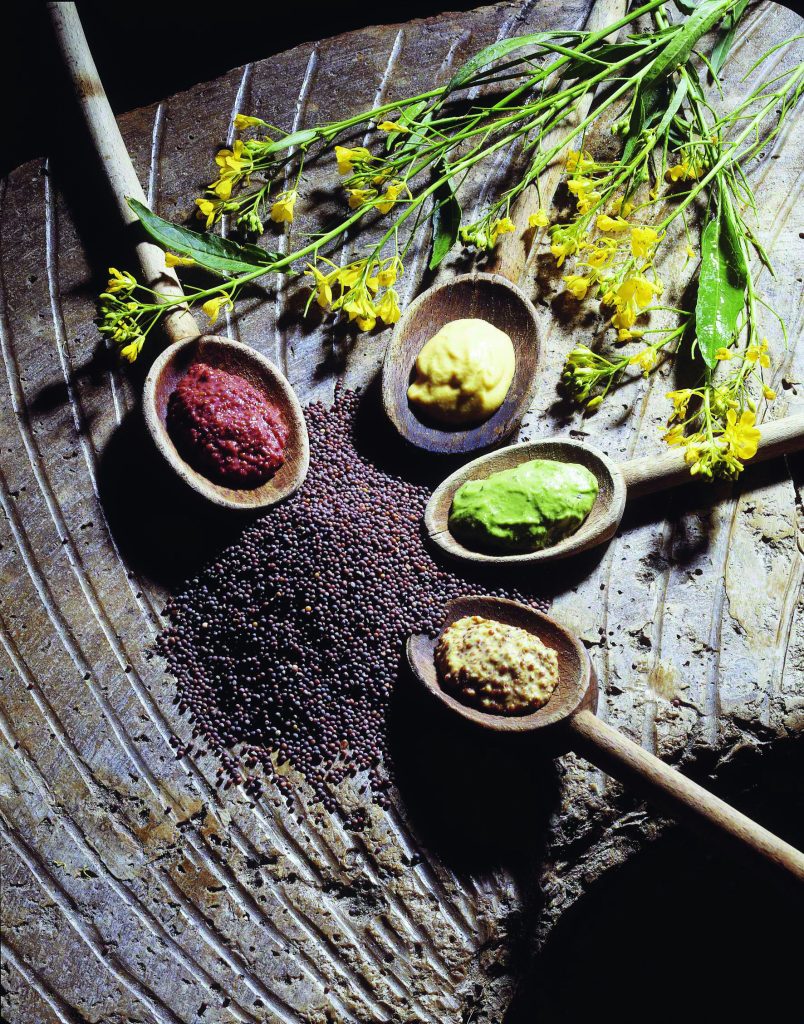
Fallot Mustard Mill is known as the gold standard, as this family owned business has been crafting mustard using traditional stone-ground methods in Burgundy since 1840. So when I planned my first trip to Burgundy, Fallot was the first thing on my list to do in Dijon, until I discovered it was actually in Beaune!
Fallot Mustards: The Seeds take Root
It all began with Léon Bouley, his oil-works, and a passion for mustard. Back in 1840, he opened a small mustard mill and oil workshop right in the heart of town. His dedication to quality didn’t go unnoticed—by 1903, his products had earned a diploma from the City of Paris at the Great International Exhibition. Although it was produced in Beaune, as Dijon is the capital of Burgundy, it got the recognition.
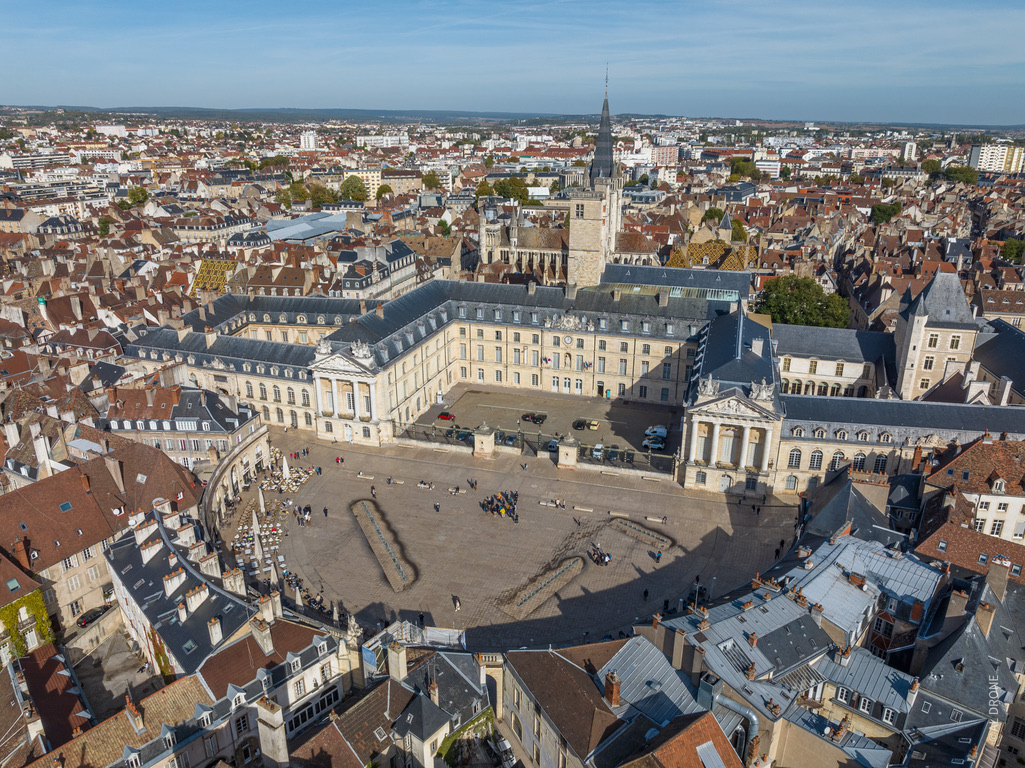
His successors, Mr Jacobs in 1923 and Mr Paul Chateau in 1925, continued to pay utmost attention to the quality, marrying tradition with innovation, but it was with the arrival of Edmond Fallot in 1928 that the mill really reached its peak, instilling a new lease of life.
Today it is Marc Désarménien at the helm, grandson of Roger Désarménien who joined the family company in 1945. Marc had grown up around the grindstones and knew the craft inside and out. His mission was clear: to modernize the company without losing what made it special. The slow, stone-grinding of mustard seeds—the heart of traditional production—remained untouched. But he also brought fresh energy, developing new recipes that stayed true to their Burgundy roots while appealing to modern tastes. Thanks to him, Fallot mustards are as innovative as they are authentic.

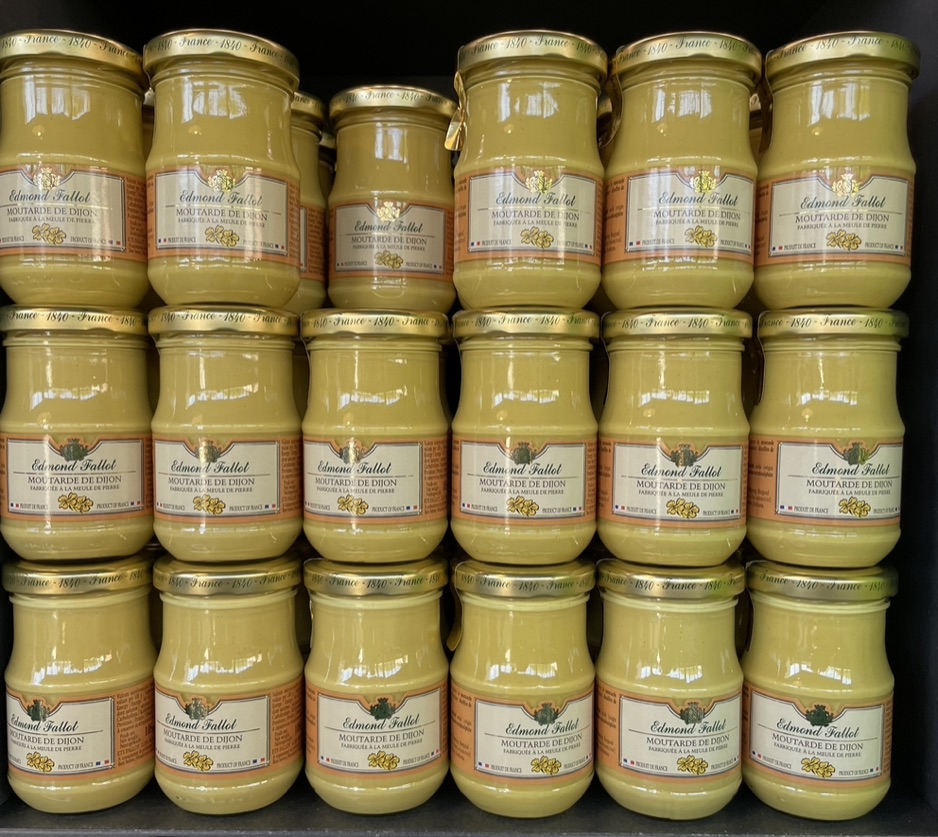
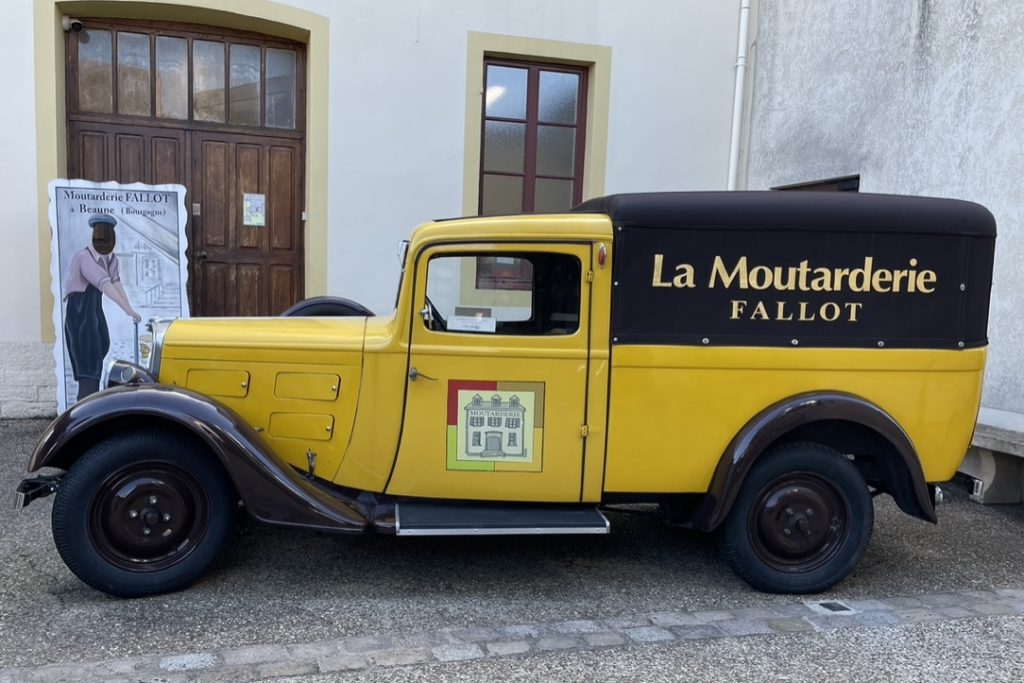
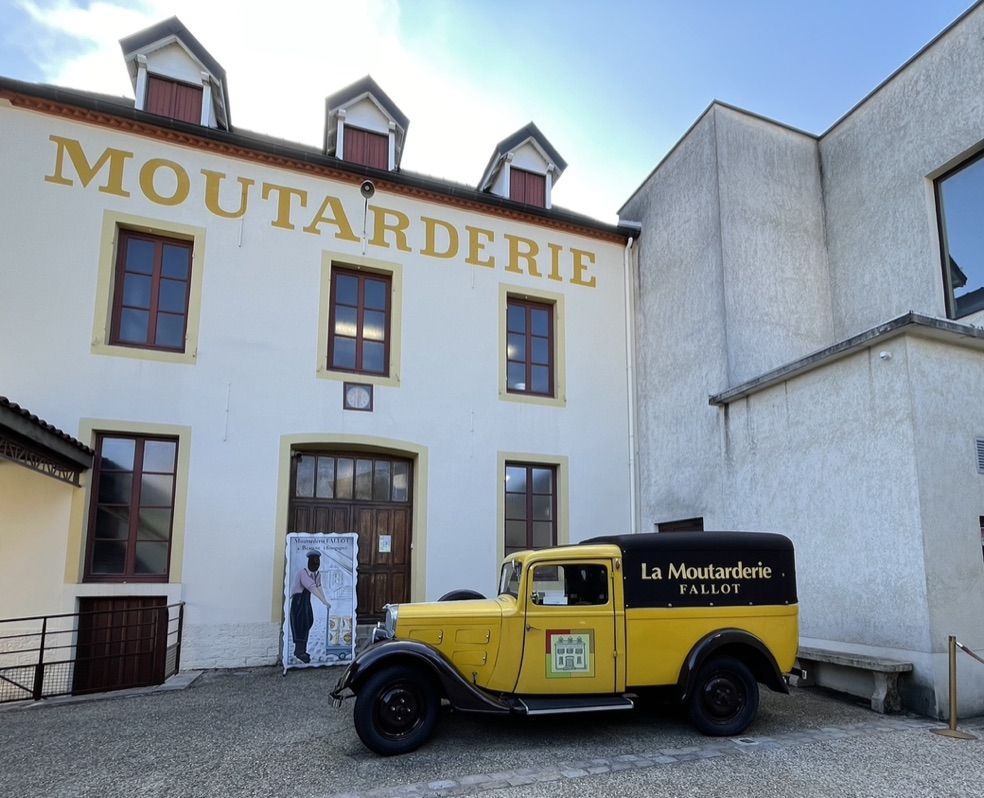
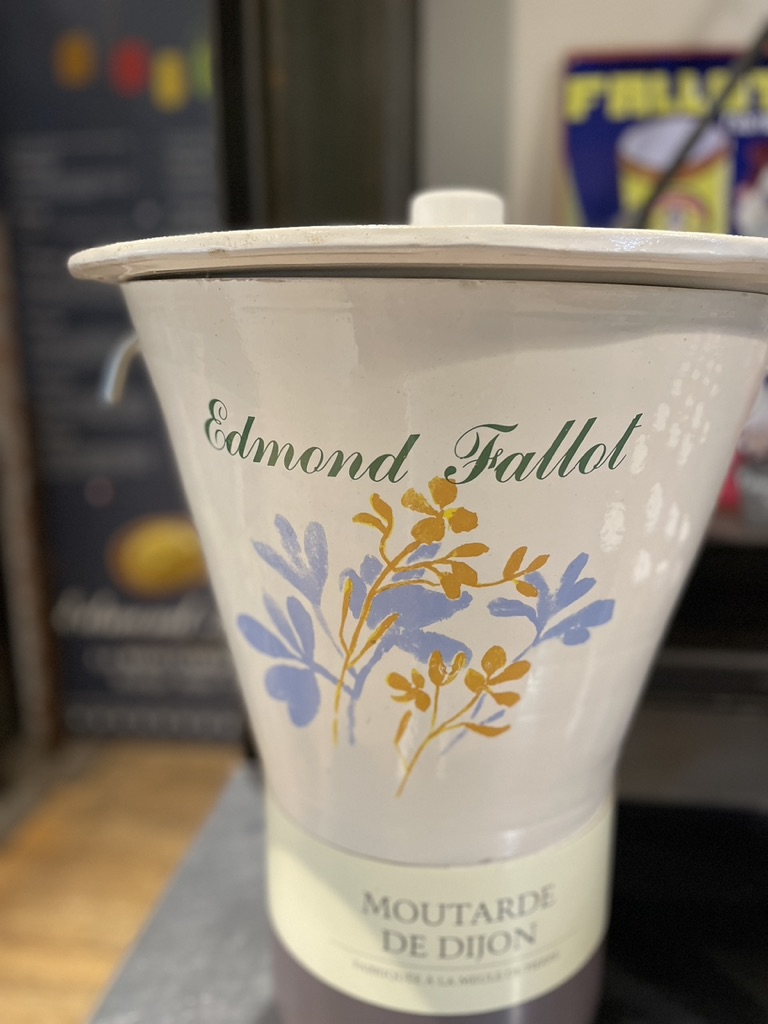

Visiting the Mill in Beaune
The entrance is inviting, the yellow accents simply joyful. My mouth is watering in anticipation, but there is much to learn before the tasting. First things first. There are two different types of visits: Découvertes (Discoveries) and Sensations Fortes (Strong Sensations). Unable to choose, I do both.

Découvertes Tour
The “Discovery Tour” takes you through the history, getting an up close look at the tools of yesteryear. You walk through time, as the process gets more modern, but uses the same tradition and savoir-faire. The highlight of this tour is taking the seeds into your own hands to create your very own Dijon mustard, which is actually quite simple. You may find the little jars of Fallot mustard that they give out at the end a bit more palatable, however!
Making your own Mustard

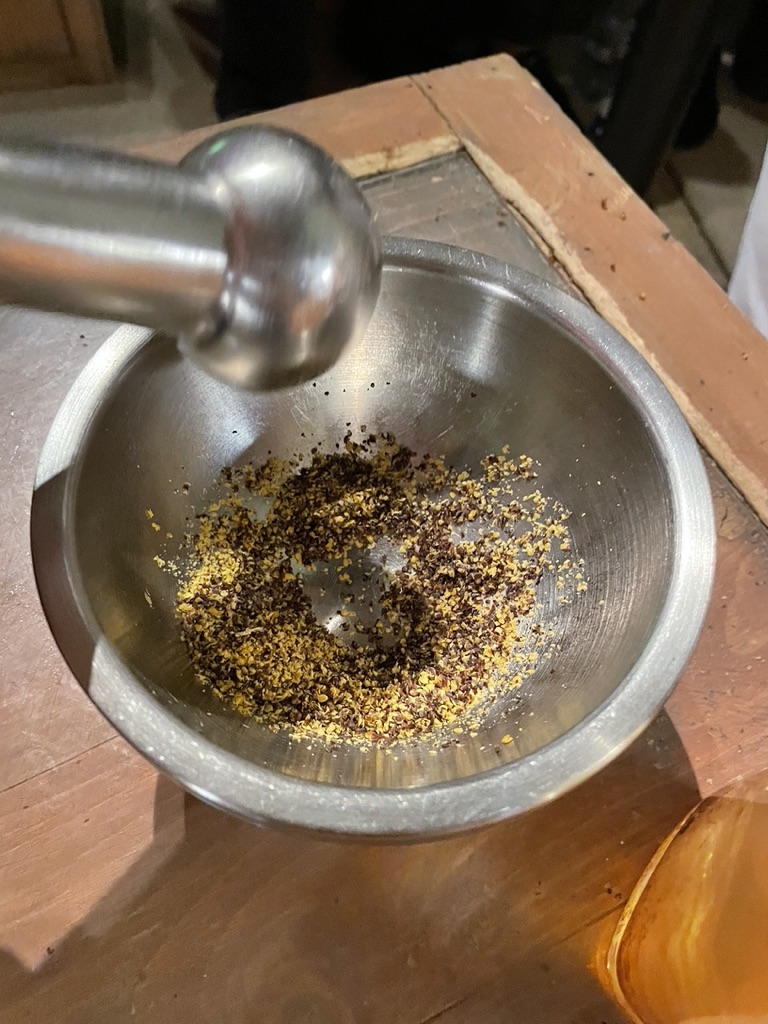
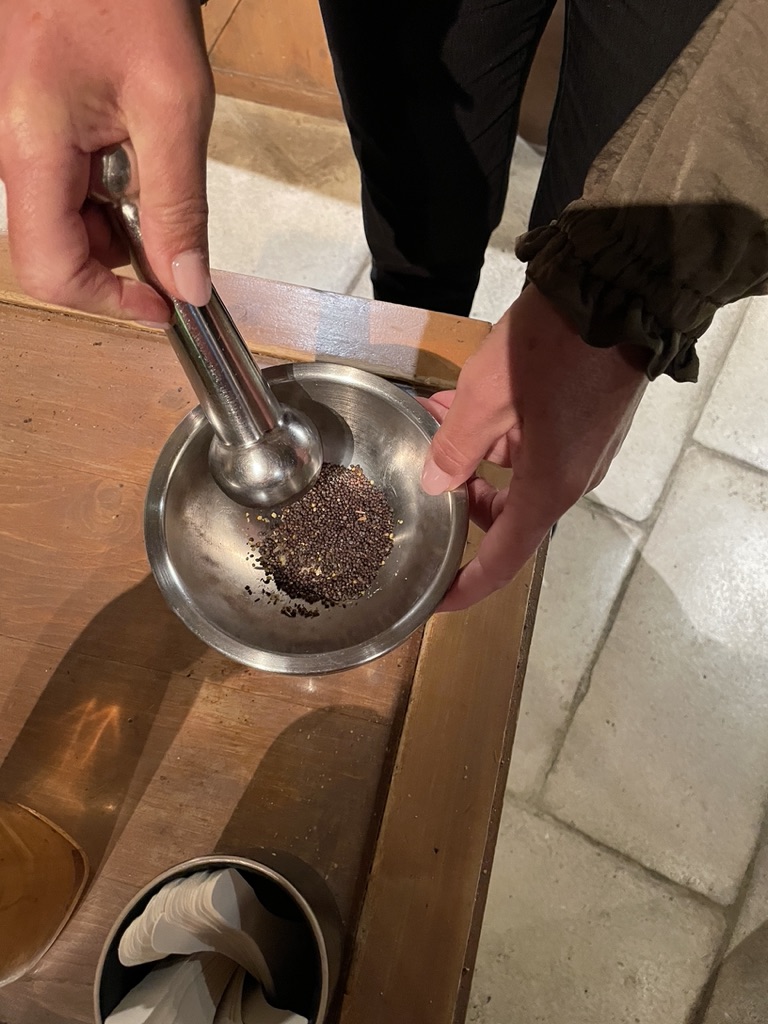
Sensations Fortes
The Sensations tour focuses on sensory experiences to discover the modern process. Through a blend of sights, sounds, and hands-on experiences, the tour walks you through every step of the process—from the towering storage silos to the stone mill room to the final bottling line. By the end, you’ll have a whole new appreciation for how a tiny mustard seed transforms into one of France’s most beloved condiments.
The Tasting Bar
Each of the tours ends in the boutique, where the shelves are lined with every possible flavor of mustard, but also cookbooks and other kitchen essentials. As it can be overwhelming to choose, they have added a “Mustard Bar” where you can taste any (and all!) of the flavors in small samples. The knowledgeable staff will guide you to finding your petit bonheur – whether it is the earthy walnut mustard , or the spicy tarragon mustard – there is truly something for everyone! The family has intentionally incorporated many regional specialties as well, such as the blackcurrant (cassis) and gingerbread (pain d’épices). You simply have to try these unique flavors!
Also be sure to try the seed style mustard. I always thought it would be more spicy, but it actually is less piquant. Why? It is only when the seed is split open that the intense flavor is released. So unless you bite open every seed, the moutarde en grain will be more mild.
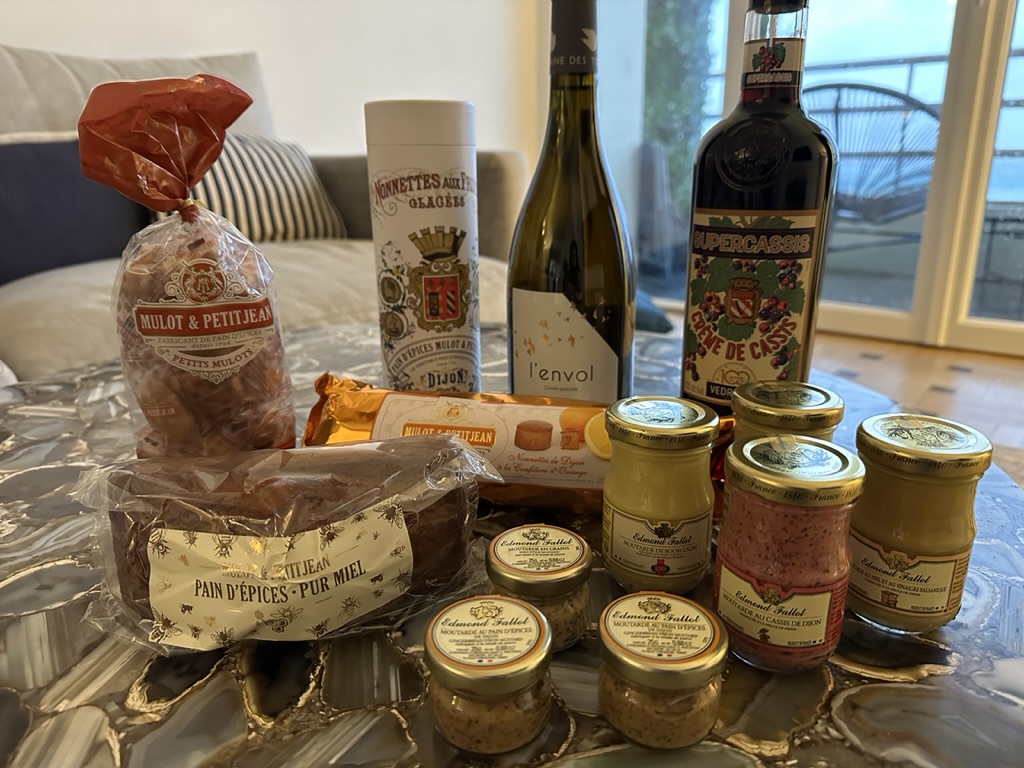
Although I said Dijon mustard can be made anywhere, there is one exception! “Burgundy Mustard” (Moutarde de Bourgogne) must be made in Burgundy. Manufactured from seed grown in Burgundy and combined with AOC Burgundy wine”, Burgundy Mustard” is a product deeply rooted in Burgundian soil. Be sure to buy at least one jar of this most authentic product.
Pro Tip: Each of these tours can be privatized for groups. Even if you plan to come as individuals, reservations are highly recommended as this is one of the most popular destinations in Burgundy!
Where to find Fallot Mustards
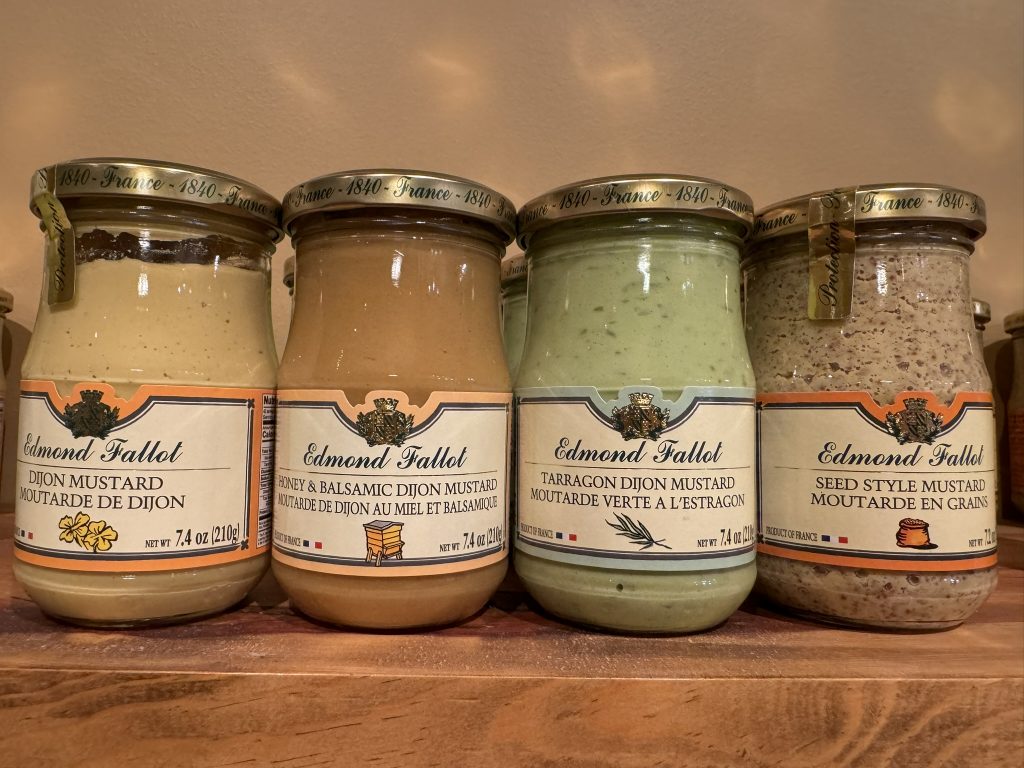
The French were in such panic during the shortage of mustard seeds in 2022! Reminiscent of the pandemic-toilet-paper hoarding situation, people were limited to how many jars they could purchase. But Mother Nature restored balance, and shelves are now adequately stocked. Just in time for summer picnics! Of course you can find the complete line of mustards at the Fallot factory and boutiques, but there are also readily available in many other countries, including the US. We are proud to stock them at the brick and mortar French Detours boutique (in Lakeville, Minnesota), but they can also be found at gourmet food shops and even online at The French Farm.
Need inspiration for all of this mustard? Fallot provides chef-inspired recipes!
Bonne dégustation!
Want to go try Fallot mustards in Beaune? Click here for your complete Burgundy Travel Guide.
- Explore the regional specialties of Burgundy. Small-town shops, and stories from locals that leave lasting impressions.

